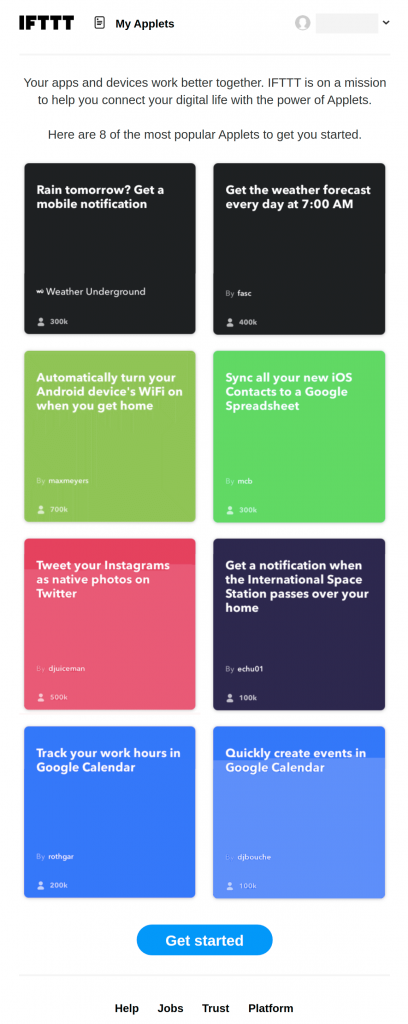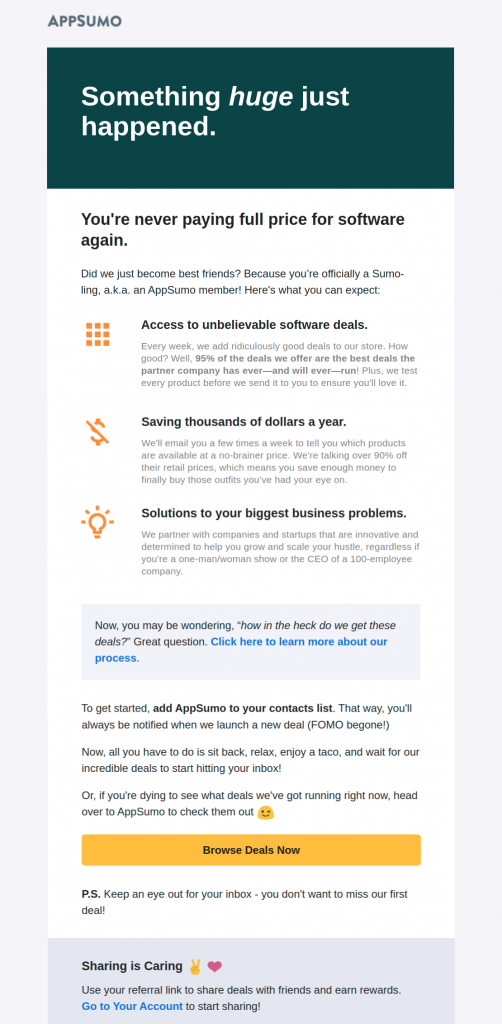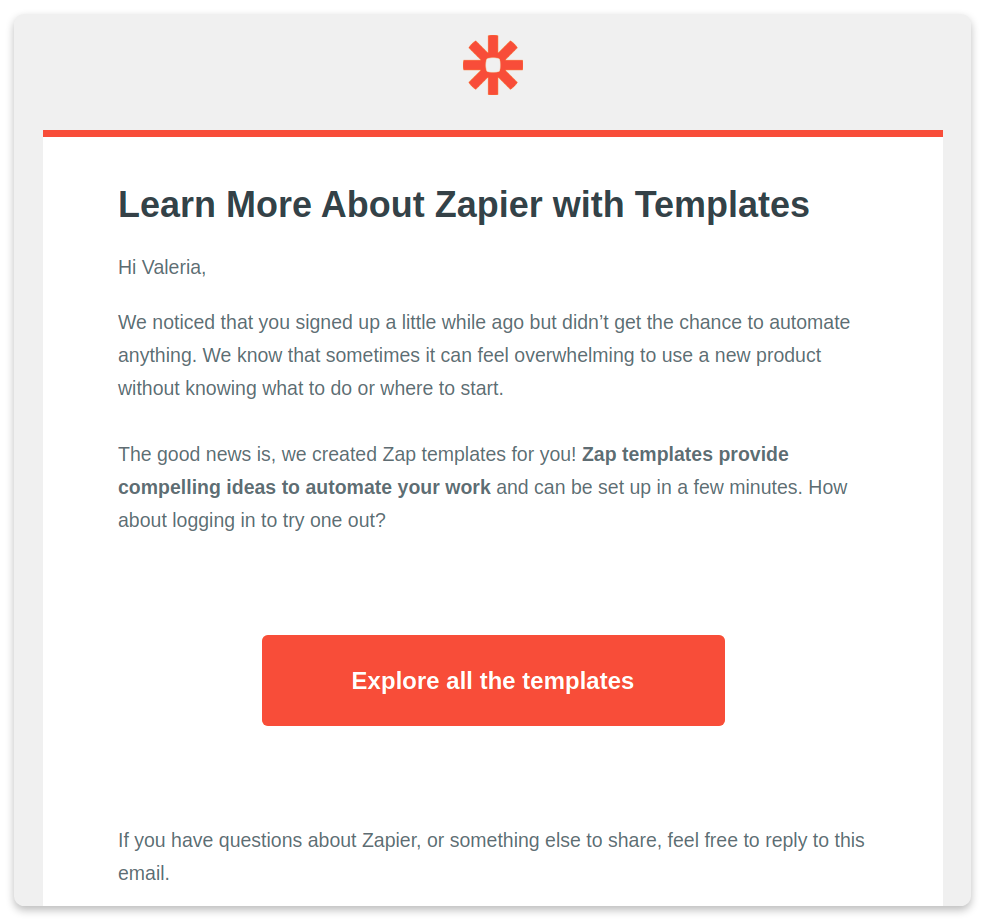Onboarding
Onboarding is the process of acquainting new clients or users with your product to reduce churn rate, grow engagement, build long-term return customer relationships, and improve LTV. Through it, you can educate clients on how to get the most out of your product, improve customer loyalty, and have a higher chance of gaining brand fans.
Why onboarding is a must
To grow, a business needs both great customer acquisition and customer retention strategies in place. Onboarding is just that. When done right, it helps clear up any questions or concerns customers may have about your product or service. When unaddressed, these questions usually go towards your customer support team or, in the worst-case scenario, stop the user/client from seeing your product as a solution at all, contributing to high churn rate and low customer lifetime value.
Onboarding is especially necessary for complex SaaS solutions, where customers are most likely to struggle when using the product. Your job is to give them all the necessary information, guides, and resources to help them through the learning curve.
Comprehensive onboarding results in:
- Increase in customer lifetime value:
When customers are satisfied with the product, know how to use it, and don’t feel abandoned by the company once the sale is closed, they are much more likely to stay and repeat the purchase, increasing the average CLV. This results in… - Higher revenue:
Clients that go through onboarding process are not just less likely to churn, they are also more likely to become loyal clients for years to come, bringing in consistent revenue. And let’s not forget about… - Higher ROI:
It is 5 times more expensive to attract a new client and lead them through the sales funnel compared to retaining an old one. Establishing the onboarding process will help you maintain a high retention rate. - More clients:
Word-of-mouth works better than most thought-out campaigns. With high-quality onboarding, your solution will turn many clients into loyal brand fans, making it likely to be recommended.
Main onboarding types
Customer onboarding is an inevitable step in the success of your customer retention efforts. There are three major types of the onboarding process: website, emails, and in-app onboarding.
Website onboarding
Organize website onboarding through sign-up forms and case studies, FAQs and tutorials, push notifications and pop-ups.
- Make the sign-up form valuable both for you and the user and ask for as much information as you need to later offer high-quality personalized onboarding.
- People trust what others say about you. So get in touch with your most allegiant customers and ask for reviews and case studies.
- Easy-to-find FAQs, knowledgebases and tutorials are all things that set apart companies that care about their clients from the rest.
All these are the website onboarding practices that help retain existing and convert potential clients. Knowledgebases are particularly popular and easy-to-organize.
In-app onboarding
If your product is an application, you need to implement onboarding directly into your app.
With in-app onboarding, your application is the place where customers learn your product and its features on-the-go. Your app is the perfect place to teach them – all tips and lessons can be implemented and tested right there and then. There are two main ways to organize in-app onboarding.
- Video tutorials to your app and its features are a great way to make sure users know how to use the service, especially anchored right under the header or popping up when a certain feature is opened. This way, they will always be easy to find and hard to miss.
- Then there’s interactive onboarding through pop-ups that lead the user through the processes by encouraging them to perform certain actions. In-app onboarding can be as simple or as complex as you need it to be. The goal, however, always stays the same – to make sure your user learns how to use the service and has help available if they have any questions or issues.
Onboarding emails
Onboarding emails are the simplest and most common way of organizing your customer onboarding efforts. The four main types of onboarding emails are welcome, re-engagement, educational, and evaluation emails.
Welcome emails
The welcome email is the first email (or a series of emails) that your customer receives from you. This type of email always shows high open and click-through rates (according to a study by Experian, on average 57.8% and 14.4% respectively).
The first welcoming email(s) help you set up a connection with clients and make sure everything is going well. Welcome emails are used to:
- confirm a sign-up or purchase
- present details about your service/product that will highlight your main selling point
- offer useful resources to help the client make the most out of your product
- assure clients that their needs are your priority
- explain how the client can contact you with any questions or issues
- push them towards an action
Here are some great examples of welcome onboarding emails from IFTTT and AppSumo:


Re-engagement emails
Though it’s impossible to have a 0% churn rate, onboarding re-engagement emails will help you minimize it, especially when you create one for each specific case. Most often, re-engagement emails are used to push clients to finish incomplete actions and to win inactive users back.

To gain dormant clients back, you can send relevant and informative onboarding content to show that you value them and rekindle their interest in your products or services. It’s not uncommon for these to include personalized discounts and special offers.
Educational emails
People may get overwhelmed about a new product and have questions regarding some features. To prevent those questions and misunderstandings, set an email sequence of onboarding educational emails with video guides and/or articles that will give answers to the questions your clients have most often.
Here are some examples of educational onboarding emails from Canva and WordPress:


Just don’t insert all and sundry into one email: one email should answer one question.
Evaluation emails
Evaluation emails are the messages that encourage active clients to take another step towards the next stage of your business relationships – conversion. In the email, you can offer them to upgrade to a paid plan, ask them to refer their friends, book a demo, etc.
How to improve your user onboarding
The good onboarding process is necessary to show the clients that you care and appreciate them. It can be done (and improved!) by constantly working on a few things: fast follow-ups, human support, relevant content, focus on relationships (not sales), and communication.
Fast follow-up
A common misconception is that fast follow-ups damage the reputation of professionals, and customers will soon leave because of such frequency. On one hand, that can be true; on the other hand, they won’t if you do it right.
To follow-up at the right time think of what the recipients are supposed to do to get to the next stage of the sales funnel and how much time they need for this action. This way, you will define your perfect onboarding email frequency depending on your goals.
Human support
FAQs and relevant content are a must for onboarding, but those, as well as bots, won’t always answer the questions your customers might have. You need a highly-qualified team of human support.
This support team should cope with all the customer inquiries, questions, and issues fast. Slow support is straight-up annoying – no one wants to wait long hours for a simple answer. Make sure the support team is available via a variety of channels – live chats, email, and phone.
Among the less obvious things, your support team shouldn’t only answer questions. They should also ask them. When you ask questions, your customers feel the individual approach and care for their specific needs. In turn, you receive extra information about your users/customers and can use it to perfect your buyer persona and analyze the customer base.
Relevant content
Educational content is the key element of good customer onboarding. Besides articles, posts on social media, and human support, you can hold webinars, record video guides and vlogs, publish glossaries, organize knowledge bases, and offer to download the best content as PDFs. All this valuable content is created to welcome customers aboard, nurture them, and lead them to conversion.
Focus on relationships, not sales
Though the final step is always a conversion, the way to it is through building relationships. Hire a team of professionals who will take care of this: connect with leads and customers on social media, send onboarding emails, make calls, conduct demos, etc. Communication with a real person is what will make a customer feel valued.
Onboarding checklist
Onboarding is the process of nurturing and educating customers about your product, and its success fully depends on the components of your onboarding strategy. Think of the onboarding strategy in advance and implement it to the fullest of your abilities:
- Use popups and advanced signup forms on your website
- Create sequences of onboarding emails
- Take care of in-app onboarding
- Hire a support team to provide timely answers
- Publish relevant content
- Build a knowledge base
- And concentrate on human communication first.















